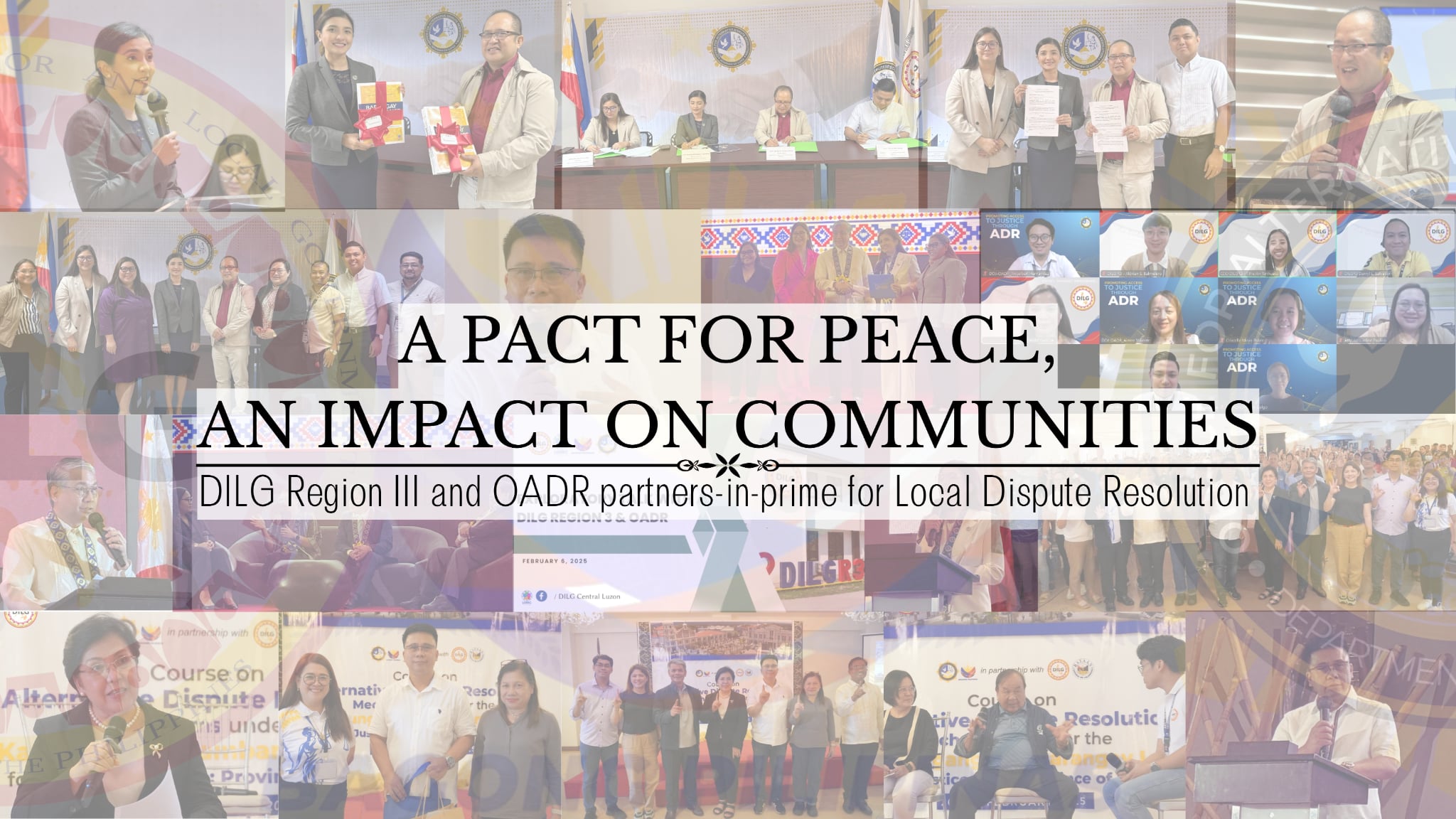
Introduction: Building Bridges and Breaking Walls
In its pursuit of responsive and peaceful local governance, the Department of the Interior and Local Government Region III recognizes the growing need to enhance the capacities of barangays and DILG officers in conflict resolution. While Katarungang Pambarangay has long served as a cornerstone of justice at the community level, the evolving landscape of public service calls for additional tools—and partnerships—that uphold justice through dialogue, not division.
This led to the realization that a strategic partnership with the Office for Alternative Dispute Resolution (OADR) could provide both relevance and reach. What followed was a journey that began with an invitation and blossomed into a full-fledged alliance—anchored in mutual trust and a shared commitment to build stronger, more harmonious communities across Central Luzon.
Exploring PossibilitiesDriven by a shared vision, DILG Region III reached out to OADR on January 24, 2025, to propose an exploratory meeting for a strategic collaboration. The OADR, responsive to the call, replied on February 3, 2025, confirming a Zoom meeting to discuss potential synergies and program convergence.
On February 6, 2025, the two institutions met virtually via Zoom. In that meeting, both parties introduced their mandates, programs, and areas for collaboration. DILG Region III, through its Central Luzon Local Governance Regional Resource Center (CL-LGRRC), emphasized the need for community-based interventions and support to barangays, while OADR highlighted its commitment to expand the reach of ADR mechanisms to the local level. The discussions were productive and hopeful—leading to the initial drafting of a Memorandum of Agreement (MOA).
A Milestone in the MakingThe commitment took formal shape on February 27, 2025 at the OADR Academy, during the ceremonial MOA signing between DILG Region III and the OADR. As DILG Region III Regional Director Atty. Anthony C. Nuyda, CESO III said in his message, “This Memorandum of Agreement is more than just a formal document; it is a symbol of collaboration, a testament to our shared vision of fostering a culture of peaceful and efficient conflict resolution within our LGUs.”
The very next day, February 28, 2025, DILG Region III participated in the culmination of the Course on Alternative Dispute Resolution Mechanisms under the Katarungang Pambarangay Law in Bataan. In his inspirational message, DILG Region III Assistant Regional Director Jay E. Timbreza, CESO IV, reminded barangay officials and Lupon Tagapamayapa members of their vital role: “You are peacebuilders, mediators, and guardians of harmony in your communities.”
Building on the MomentumThe collaboration continued to grow. On April 2, 2025, the OADR invited DILG Region III to take part in the celebration of the 21st Anniversary of Republic Act No. 9285, or the ADR Act of 2004.
On April 7, 2025, ARD Timbreza, delivered a message of support during the anniversary event, reaffirming DILG Region III’s dedication to the cause. He shared plans to co-develop ADR training modules—one for internal use by DILG personnel, and another focused on Katarungang Pambarangay to help field officers coach and capacitate their assigned barangays.
“These initiatives signify our support to the OADR’s vision of fostering a just and peaceful society,” Dir. Timbreza said. “Together, let us continue to work to turn this partnership into meaningful actions that will greatly impact the delivery of public service.”
Conclusion: A Partnership with PurposeFrom a single invitation to a signed agreement, the journey of DILG Region III and OADR demonstrates the power of shared intent. It is a story of institutions coming together—not just to fulfill mandates, but to empower people, to strengthen communities, and to bring peace closer to where it matters most: the grassroots.
This partnership is still unfolding. But already, it stands as a model of convergence—of how agencies can collaborate not just to manage conflict, but to transform it into opportunities for understanding, justice, and unity.